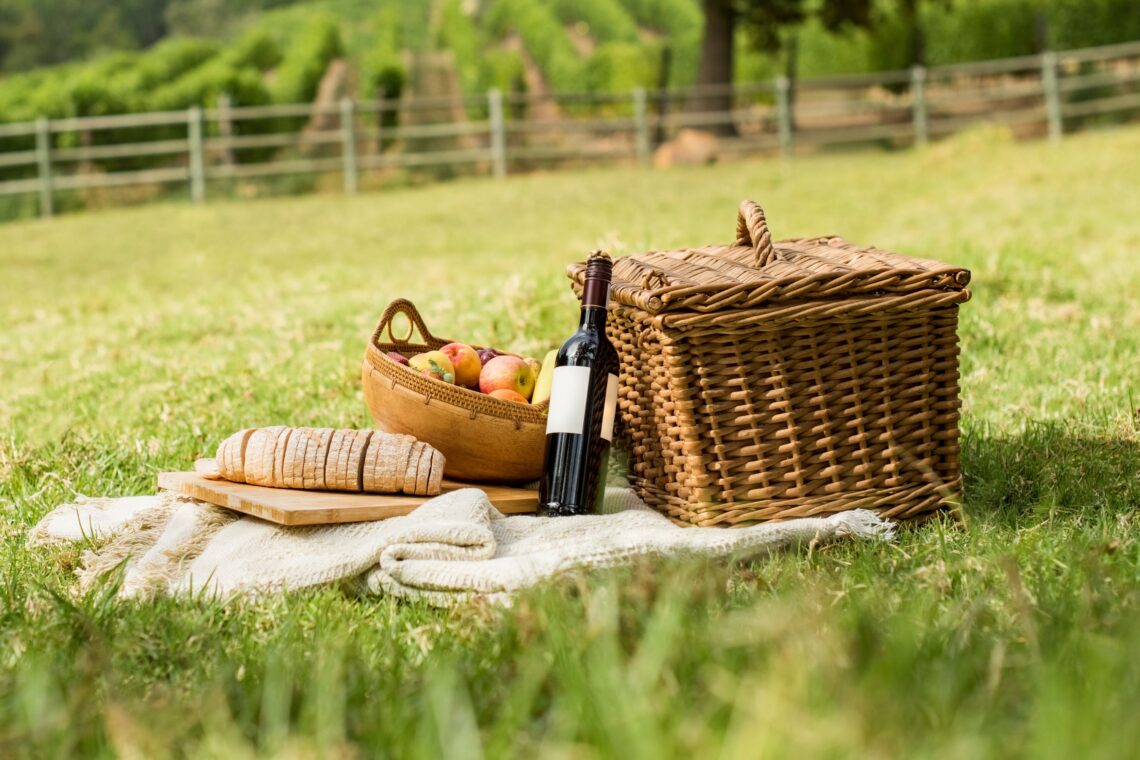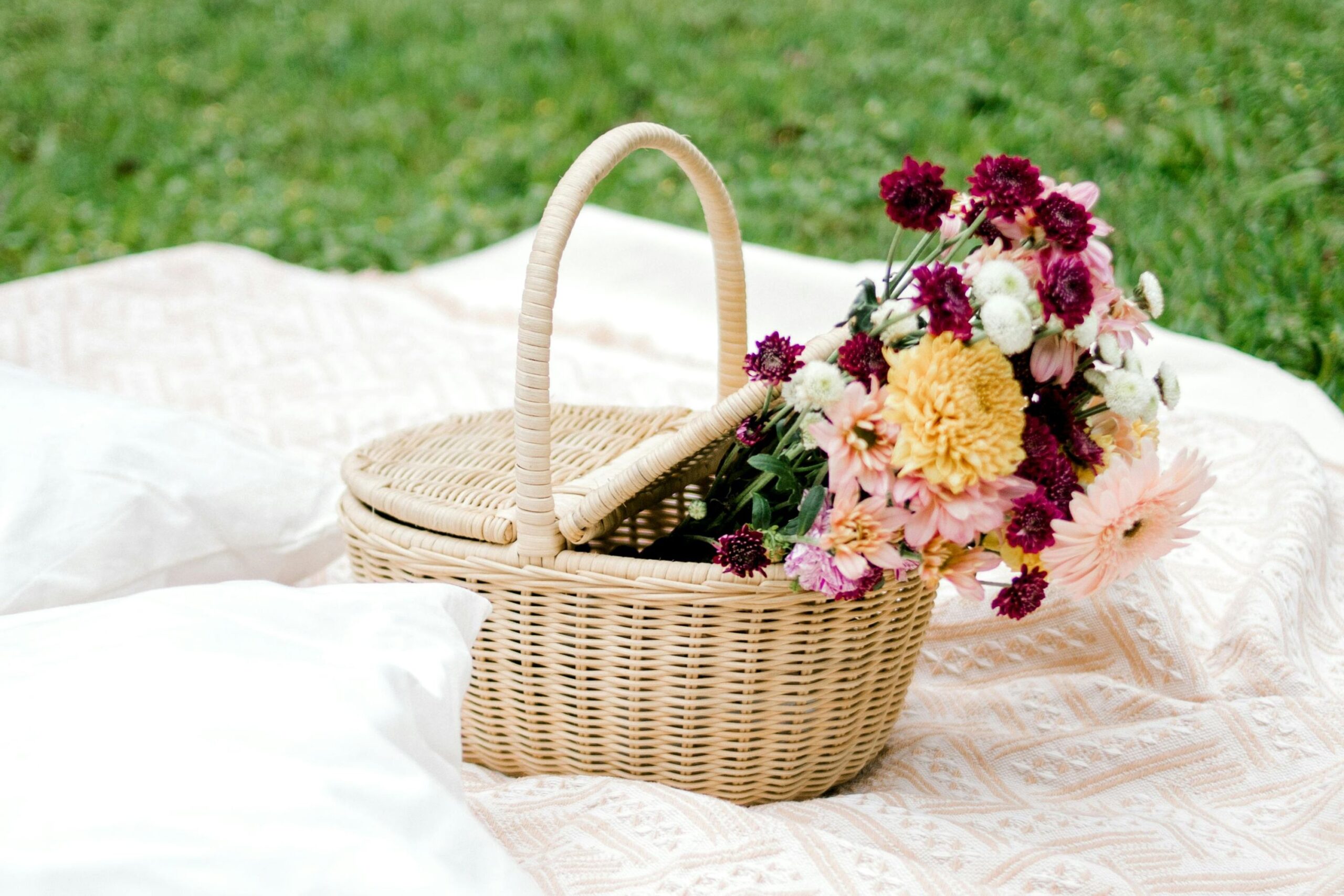
What’s the Best Season for Planning a Solo Picnic?
Planning a solo picnic is more than a quiet lunch outside. It’s a way to reconnect with yourself, take a break from digital noise, and soak in the rhythm of the outdoors. But what’s the best season for planning a solo picnic? While every season has its charm, choosing the right time can make or break your solo experience. From weather to crowds to available scenery, each factor plays a role in shaping your ideal picnic day.
If you’ve ever wondered when to take your blanket, thermos, and thoughts out for a personal retreat, this guide will walk you through each season and help you decide what fits best with your mood, comfort, and style.
What’s the best season for planning a solo picnic?
The best season for planning a solo picnic depends on what you want to get out of the experience. Spring offers blooming backdrops, fall delivers crisp air and golden leaves, summer serves long sunny hours, and winter provides peace and solitude—if you prepare right.
For most solo picnic lovers, spring and fall are the most popular seasons. The temperatures are mild, nature is photogenic, and parks are quieter than peak summer. You’ll avoid the sweaty crowds while still enjoying long daylight hours.
If you’re looking for a peaceful setting to journal, sketch, or simply people-watch in silence, spring and fall are ideal times. But each season has unique perks, so let’s look at them one by one.
Why spring might be your perfect solo picnic season
Spring is the classic picnic season for a reason. It marks the end of winter’s gray grip and brings open skies, gentle breezes, and a general sense of rebirth. For a solo picnic, this is a powerful option.
What you get in spring:
- Colorful backdrops from cherry blossoms to tulips
- Mild temperatures ideal for sitting long periods outside
- Lower foot traffic in parks and trails before summer crowds arrive
- Buzzing sounds of nature that stimulate creativity and calm
If you enjoy the scent of flowers and the feeling of waking up with the earth, spring gives you a poetic picnic setup without being too sentimental. Check pollen forecasts if you have allergies and pack antihistamines.
Choosing fall for its golden calm
Fall offers an entirely different energy. While spring wakes you up, fall winds you down. The cooler air, orange-red leaves, and quieter parks make it perfect for introspection.
Fall is best when:
- You want a break from summer intensity and a chance to slow down
- You prefer light layering and cozy blankets over shorts and sunscreen
- You enjoy the sound of crunching leaves and golden-hour sun
Solo picnic tip: bring a thermos of hot tea or apple cider. It elevates the cozy atmosphere instantly.
Summer picnics: high energy, longer hours
If you thrive in sunlight and buzz, summer might be your best picnic match. Longer days mean more time to linger. You can plan a late dinner-style solo picnic and enjoy the sunset.
Just know this:
- High UV and heat mean you need shade and hydration
- Larger crowds can make it less peaceful if you pick popular spots
- Early mornings or twilight are better than midday heat
Bring a wide-brimmed hat, lots of water, and cooling wipes. If you’re into beachside picnics, summer is your season. Just skip the noon hours.
Winter solitude and remarkable quiet
Yes, winter solo picnics are real—and beautiful. You just have to prepare well.
If you crave solitude:
- Choose a sunny winter day for the best light and comfort
- Look for parks with shelters or open-air conservatories
- Pack insulated seating and warm food like soup in a thermos
The chill can be refreshing when done right. If you’re dressed warmly, the quiet of winter can be incredibly healing for the soul.
How to keep food warm for a picnic in colder months
When you’re picnicking solo in cooler seasons, knowing how to keep food warm is essential. Use a vacuum-insulated thermos for hot drinks and soups. Wrap items in aluminum foil and store them inside thermal bags. Keep everything together in an insulated tote. This way, your comfort food stays hot and your picnic stays satisfying.
Choosing your picnic location based on the season
Not every park works well year-round. In the spring, visit botanical gardens or parks with seasonal blooms. In the summer, look for shaded spots or seaside cliffs with a gentle breeze. Fall invites you to tree-lined areas with lots of leaf coverage. Winter might require parks with open shelters or scenic lookout points.
Check opening hours and any seasonal restrictions. Some picnic-friendly areas might close off sections in winter or early spring. Always have a backup location in case your first pick is unexpectedly crowded or inaccessible.
What you need to feel comfortable alone in nature
A solo picnic only works if you feel safe and relaxed. Choose spots with nearby restrooms, clear visibility, and cell reception—especially if you’re new to being outdoors alone. Trust your instincts.
Pack layers, snacks, water, a good book or journal, and a blanket that’s thick enough for the ground conditions. A portable seat can make the ground, whether chilly or damp, much easier to manage.
How solo picnics reflect seasonal moods
Each season doesn’t just change the weather—it shapes our emotions, energy levels, and internal rhythms. When you choose the best season for planning a solo picnic, you’re also selecting the emotional atmosphere that accompanies it. Recognizing how these seasonal moods align with your current mental state can help you pick the time that suits you best.
Spring: Renewal and motivation
Spring is the season of renewal and new beginnings. If you’ve been feeling stuck or craving change, a solo picnic in spring can mirror that desire to grow and refresh. Surrounding yourself with blooming trees and new greenery can awaken a sense of clarity or even spark personal goals.
Planning tip: Use this time for journaling about things you want to leave behind and what you want to welcome in.
Summer: Energy and playfulness
If you’re craving brightness and high energy, summer brings bold color, sunlight, and movement. A solo picnic in summer often pairs well with social observation—people-watching from a shady bench or sketching lively surroundings.
Solo doesn’t have to mean quiet. If your mood is elevated, summer invites you to enjoy the buzz while still keeping space for yourself.
Fall: Reflection and slowing down
Fall gives you room to think. If you need to reflect, process an emotional experience, or simply let go of mental clutter, a solo picnic surrounded by falling leaves and cooler air provides the perfect atmosphere.
It’s a great time to bring warm, grounding food, listen to calming music, or even meditate. Fall has a natural rhythm of closure and stillness.
Winter: Solitude and grounding
Winter speaks to those who need more profound stillness. While it may seem too cold for a picnic, it’s also the time when outdoor spaces are emptier, quieter, and more personal. That solitude can be comforting rather than lonely if you’re prepared.
You might only stay for 30–60 minutes, but the effect can linger. Use winter picnics to reconnect with yourself and your thoughts, free from distractions.
Planning solo picnics around seasonal allergies and sensitivities
While many people love the idea of a spring picnic, it’s also a time when allergies spike. High pollen counts can turn a relaxing afternoon into an itchy, sneezing mess. If you’re sensitive to allergens or sunlight, planning is essential.
Managing spring and summer allergies
- Check local pollen forecasts (apps like Zyrtec AllergyCast help)
- Avoid grassy areas right after lawn mowing
- Wear sunglasses and a hat to reduce exposure
- Take allergy medication 30–60 minutes before leaving home
Dealing with sun sensitivity
- Choose partially shaded spots for your solo picnic
- Pack a sun umbrella or UV-resistant scarf
- Apply mineral sunscreen with SPF 30+ and reapply if staying long
Minor adjustments help you enjoy your picnic without sacrificing comfort.
Best solo picnic locations by season in Los Angeles
If you’re planning a solo picnic in LA, the season can help guide you on where to go. Different parks shine at different times of the year, and picking the correct location enhances the overall experience.
Spring: Descanso Gardens or Exposition Park Rose Garden
These spots come alive with color and scent in spring. Both offer ample solo seating spaces with natural beauty all around.
Summer: Palisades Park or Will Rogers State Beach
These locations offer cooler breezes, shade, and ample space to escape the crowds. Go early in the morning or late in the afternoon for the best conditions.
Fall: Griffith Park or Kenneth Hahn State Recreation Area
The trees start changing color, and trails are less crowded. Griffith has a variety of views, while Kenneth Hahn offers hidden picnic spots with city views.
Winter: Vista Hermosa Natural Park or Lake Balboa Park
These are perfect for quick winter visits, offering open spaces, good lighting, and spots to sit near water or under trees without having to walk too far in the cold.
Always check open hours and parking availability before you go. Some locations have seasonal access limits or modified schedules.
How to build a solo picnic ritual
Turning solo picnics into a recurring ritual can make them more meaningful. It’s not just about eating outside—it becomes a habit of care, mindfulness, and personal space.
Step 1: Pick a date that suits your seasonal rhythm
You don’t need to wait for perfect weather. Choose a day that suits your schedule, even if it’s overcast or chilly.
Step 2: Prep a small detail that feels indulgent
This could be a cloth napkin instead of paper, your favorite drink in a mason jar, or a handwritten card to yourself. A small detail makes the moment feel intentional.
Step 3: Keep distractions away
Put your phone in airplane mode or use it only for music or photography. The goal is to give your attention to yourself and the setting.
Step 4: Reflect before you leave
Take five minutes before packing up to write down one thing you noticed, one thing you felt, and one thing you’re taking with you (mentally or emotionally).
Over time, this can turn a simple solo picnic into a seasonal touchstone—something that grows with you.
Creative ways to document your solo picnic by season
A solo picnic can become more than just a personal moment—it can evolve into a creative memory. Documenting your experience adds an artistic layer to the outing. It provides you with something tangible to reflect on later and can help you track how your preferences evolve with each season.
Spring: Nature journaling and color swatches
The rebirth of nature in spring offers plenty to capture. Bring a sketchbook and draw trees, flowers, or even textures like bark or grass. You can also create a “color swatch” page using watercolors to reflect what you see around you.
If writing is your thing, describe the sounds you hear, the smell of the air, and how you felt sitting alone in a waking landscape. This helps you connect with the environment more deeply.
Summer: Photo stories and quick audio notes
With abundant light and vibrant scenes, summer is perfect for visual documentation. Use your phone to create a short photo essay—begin with your picnic setup, then include shots of your surroundings, a close-up of your food, and maybe a candid selfie.
For a personal touch, record a short voice memo about how the day made you feel or what stood out to you. Save these to revisit on colder, quieter days.
Fall: Poetry, pressed leaves, and warm tones
Autumn invites introspection. If you’re drawn to writing, try composing a short poem during your picnic. Let the colors and smells inspire your language.
Another idea: collect a few fallen leaves and press them between the pages of a notebook. Jot the date, location, and your mood. Over time, you’ll have a seasonal scrapbook of personal growth.
Winter: Reflection lists and minimalist photos
Winter’s simplicity lends itself well to quiet documentation. Take minimal, stark photos that capture the season’s clean lines and stillness.
You can also write short lists: three things you noticed, two thoughts you had, one thing you’re grateful for. These lists are fast, meaningful, and easy to do with gloves on.
Seasonal solo picnic playlists to set the mood
Music changes how we experience space. Creating or using a season-specific playlist helps you immerse yourself in the moment and match your surroundings.
Spring Playlist Vibes:
- Acoustic guitar
- Birdsong blends
- Upbeat indie folk
Great for light movement and fresh beginnings.
Summer Playlist Vibes:
- Chill electronic
- Reggae or beachy tunes
- Lo-fi beats
Pairs well with sunlight and slow afternoons.
Fall Playlist Vibes:
- Classic jazz
- Deep acoustic
- Soft instrumental piano
Ideal for mellow reflection and crisp air.
Winter Playlist Vibes:
- Ambient music
- Nordic folk
- Classical strings
Designed to soothe and ground in still surroundings.
Simple solo picnic recipes by season
Food plays a central role in shaping your picnic experience. What you pack should reflect the season, not just for freshness, but for comfort and practicality.
Spring: Light and fresh
- Herbed goat cheese wrap with arugula
- Fresh berries
- Cucumber-mint lemonade
Summer: Cooling and hydrating
- Watermelon-feta salad
- Cold pasta with pesto and cherry tomatoes
- Iced hibiscus tea
Fall: Warm and spiced
- Roasted veggie sandwich on focaccia
- Apple slices with almond butter
- Hot spiced cider
Winter: Hot and hearty
- Thermos of lentil soup or chili
- Mini quiche or warm grain bowl
- Ginger tea or hot cocoa
Packaging tip: Use thermal containers and insulated wraps to maintain the right temperature.
Tips for creating your picnic tradition by season
Building your solo picnic tradition doesn’t need to be elaborate. Consistency and personalization matter more than perfection.
- Spring: Start the season with a journal prompt you revisit each year.
- Summer: Always pack one fruit you’ve never tried before.
- Fall: Bring the same cozy blanket and seasonal candle.
- Winter: End with a handwritten letter to yourself, to read next year.
These little acts create continuity. Over time, they transform your solo picnics into meaningful rituals you’ll look forward to as the seasons change.
FAQs
What’s a good way to document solo picnics without using a phone?
Bring a small sketchbook or notepad to write down sensations, draw your food, or track your mood.
How can I keep my picnic food fresh in the summer heat?
Use insulated bags, frozen water bottles as ice packs, and avoid dairy- or meat-heavy meals if you’ll be out for an extended period.
What’s a good solo picnic playlist app?
Spotify and YouTube Music have seasonal mood playlists you can customize or download in advance.
Can I turn solo picnics into an annual tradition?
Yes! Visit the exact location each season or set a personal goal tied to each outing.
Are there low-effort solo picnic meals for colder seasons?
Try thermos-friendly soups, heated grain bowls, or pastries wrapped in foil to keep them warm.
What makes a solo picnic feel more intentional?
Add one small element you chose deliberately, such as a cloth napkin, a handwritten card, or a favorite mug.
Is it safe to picnic solo in winter?
Yes, if you pick a clear day, dress warmly, and stay near populated areas or open parks with good visibility.

